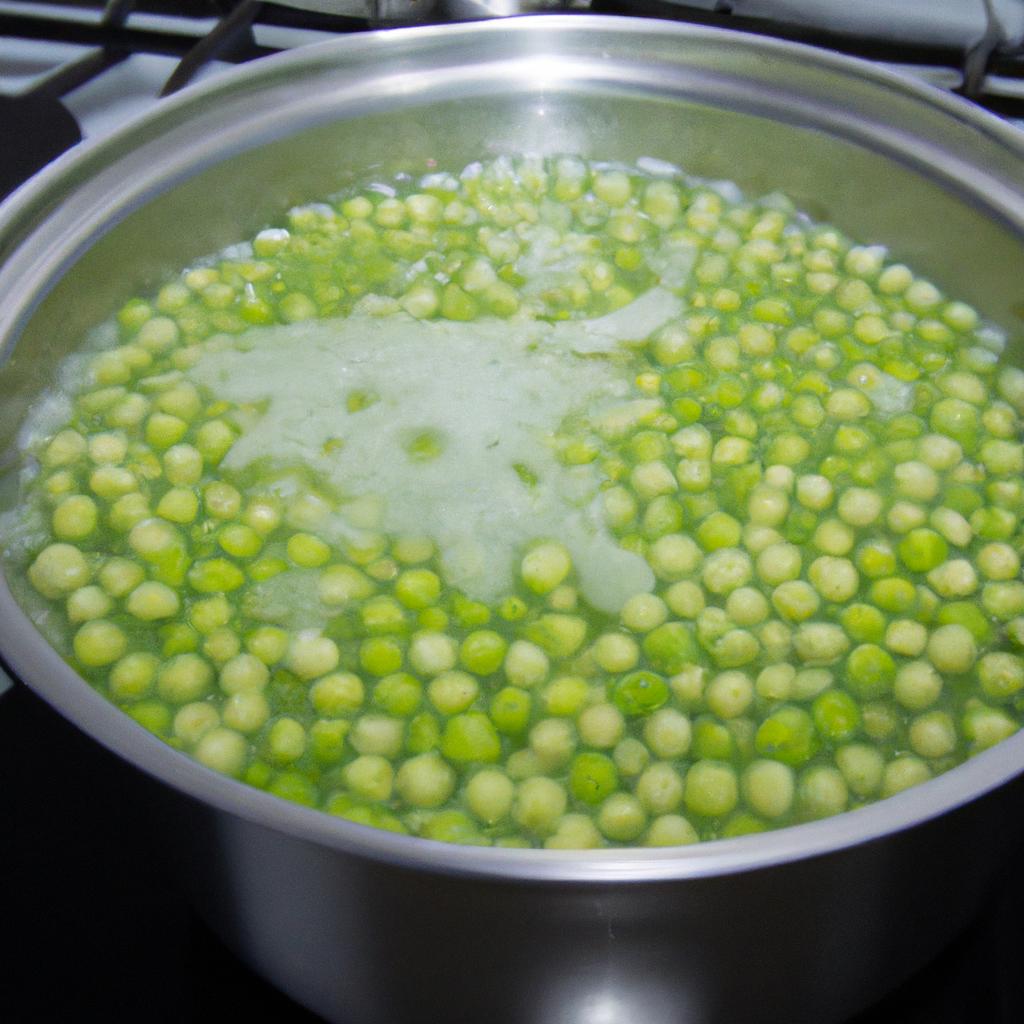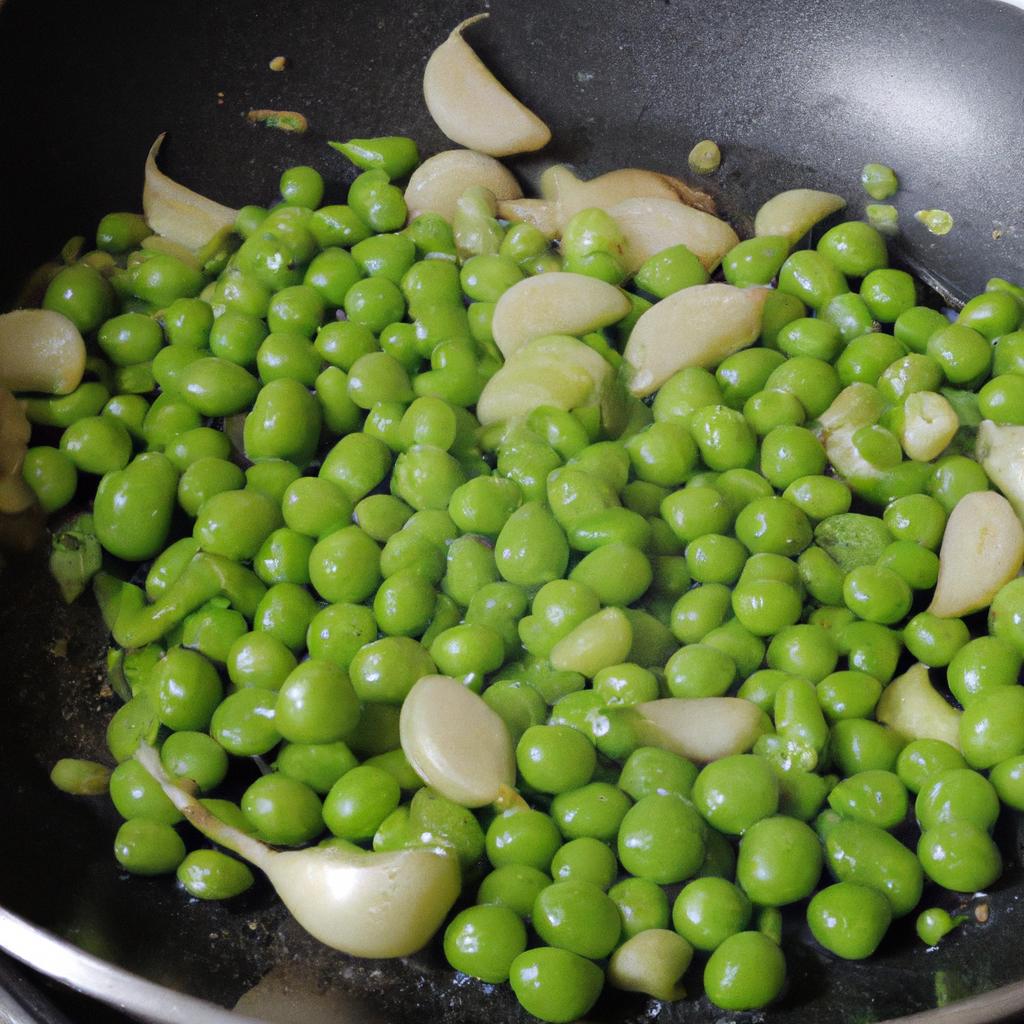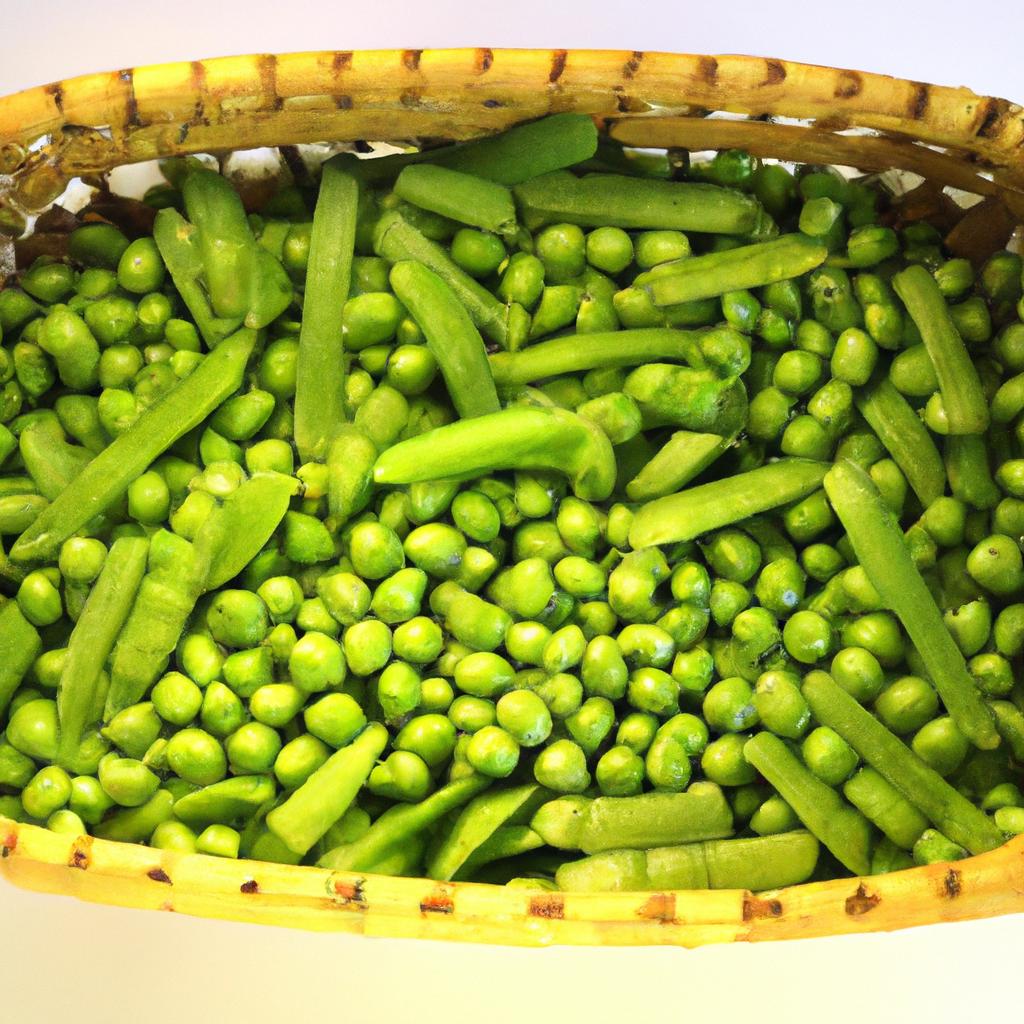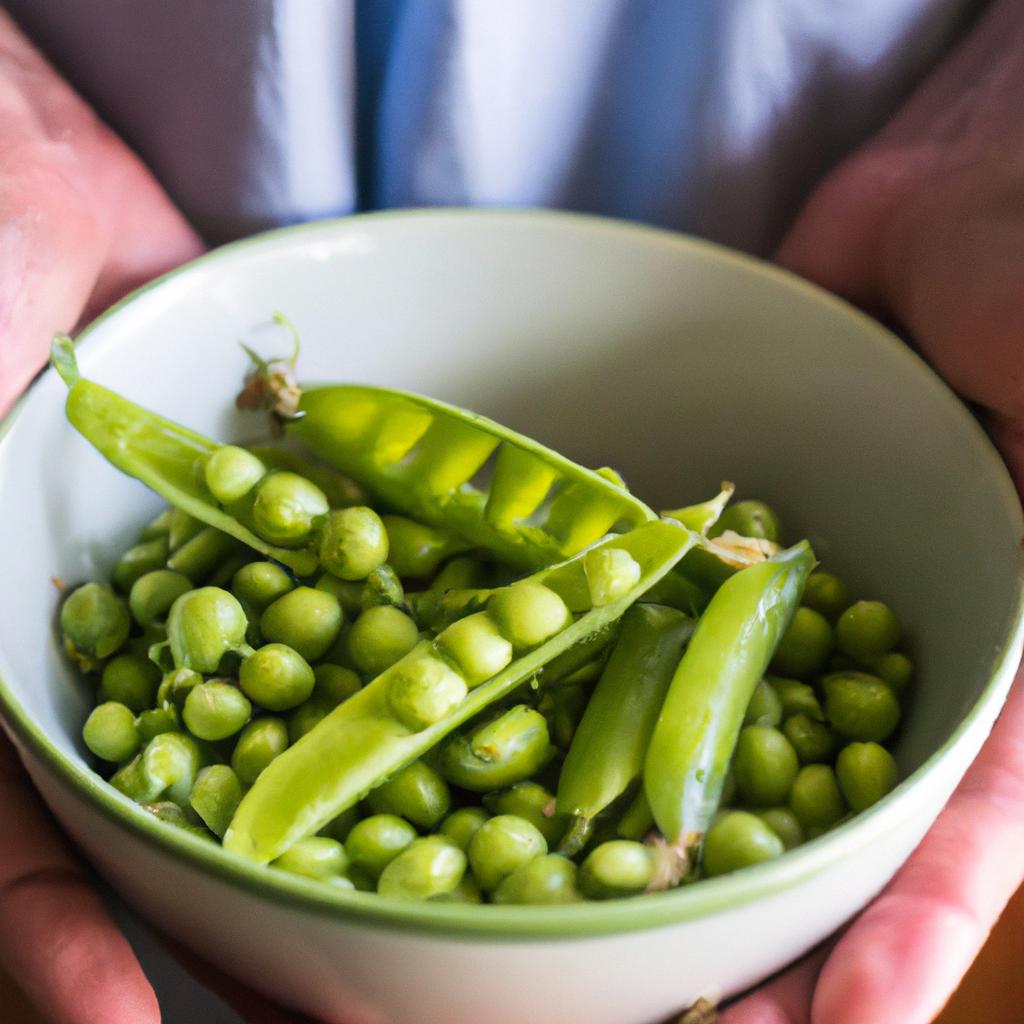As we dive into the world of cooking, it’s essential to add some healthy, wholesome vegetables to our diets, and shelled peas are a fantastic option. They are low in calories and high in nutrients, making them a versatile ingredient that can be used in various dishes. However, cooking shelled peas can be tricky, especially for beginners. That’s why we’ve put together this beginner’s guide on how to cook shelled peas.
A. Brief Overview of Shelled Peas

Shelled peas are fresh, green peas that have been removed from their pods. They are a type of legume that is packed with nutrients and are used in various cuisines worldwide. Shelled peas have a sweet taste and tender texture, making them a perfect addition to soups, stews, salads, and side dishes.
B. Importance of Knowing How to Cook Shelled Peas

Knowing how to cook shelled peas is crucial if you want to incorporate them into your diet. Improper cooking techniques can result in overcooked, mushy peas that lose their flavor and nutritional value. Cooking shelled peas correctly ensures that they retain their vibrant green color, sweet taste, and tender texture, making them a perfect ingredient for various dishes.
C. Benefits of Cooking Shelled Peas

Cooking shelled peas has numerous benefits. They are low in calories and high in fiber, which makes them an excellent option for weight loss diets. Shelled peas are also rich in vitamins and minerals, such as vitamin C, vitamin K, folate, and iron, which are essential for maintaining good health. Additionally, shelled peas are a good source of plant-based protein, making them an excellent option for vegetarians and vegans.
With these benefits in mind, it’s easy to understand why shelled peas are a great ingredient to incorporate into your diet. In the following sections, we’ll discuss the different methods of cooking shelled peas to help you get the most out of this nutrient-rich vegetable.
Choosing and Preparing Shelled Peas
Cooking shelled peas starts with selecting the right type of pea and ensuring that it’s fresh. Here are some tips on selecting and preparing shelled peas for cooking.
A. Types of Shelled Peas
There are several types of shelled peas, including English peas, sugar snap peas, and snow peas. English peas are the most common type of shelled pea and are available fresh or frozen. Sugar snap peas have edible pods and are often eaten raw. Snow peas also have edible pods and are used in stir-fries and salads.
B. Selecting Fresh Shelled Peas
When selecting fresh shelled peas, look for bright green, plump pods that are free from blemishes and bruises. The peas inside should be tender and sweet, with no signs of yellowing or drying out. If you’re buying shelled peas from a grocery store, look for packages that are stored in the refrigerated section.
C. Preparing Shelled Peas for Cooking
Before cooking shelled peas, you need to prepare them by removing them from their pods. To do this, hold the pod with one hand and firmly pull the stem with the other hand. The pod should split open, revealing the peas inside. Discard the pods and rinse the peas under cool water. If you’re using frozen shelled peas, you don’t need to thaw them before cooking.
By following these tips for selecting and preparing shelled peas, you can ensure that you’re starting with the freshest and best-quality peas for your dishes. In the next section, we’ll discuss the different cooking methods for shelled peas.
Boiling Shelled Peas
Boiling shelled peas is one of the most popular and straightforward methods of cooking them. This technique is perfect for those who want to enjoy the peas’ natural flavor and tender texture. Here are the steps for boiling shelled peas:
A. Steps for Boiling Shelled Peas
- Rinse the shelled peas under cold water to remove any dirt or debris.
- In a pot, bring water to a boil. Use enough water to cover the peas completely.
- Once the water is boiling, add the shelled peas to the pot.
- Let the peas boil for 2-3 minutes or until they are tender but not mushy.
- Drain the water from the pot using a colander.
- Rinse the peas under cold water to stop the cooking process.
- Serve the shelled peas as desired.
B. Tips for Boiling Shelled Peas
- Use a pot that is large enough to hold all the shelled peas comfortably.
- Do not overcook the peas as they can become mushy and lose their flavor.
- Add a pinch of salt to the boiling water to enhance the peas’ flavor.
- Do not add baking soda to the boiling water as it can cause the peas to become discolored and lose their nutrients.
C. Common Mistakes to Avoid When Boiling Shelled Peas
- Overcooking the peas can result in mushy peas that lose their flavor and nutritional value.
- Using too little water can lead to uneven cooking and burnt peas.
- Not rinsing the peas under cold water can cause them to continue cooking and become mushy.
- Adding baking soda to the boiling water can cause the peas to lose their nutrients and become discolored.
By following these steps and tips, you can easily boil shelled peas to perfection and enjoy their natural flavor and tender texture. In the following sections, we’ll discuss other methods of cooking shelled peas for variety in your dishes.
Steaming Shelled Peas
Steaming is a healthy and simple cooking method that preserves the nutrients and natural flavor of shelled peas. Steamed shelled peas are a great side dish that pairs well with grilled meats, fish, and other vegetable dishes. Here’s what you need to know to steam shelled peas perfectly.
A. Benefits of Steaming Shelled Peas
Steaming shelled peas is a healthier cooking option than boiling or sautéing them. Steaming helps retain the nutrients, texture, and flavor of shelled peas and can be done quickly and easily. Steaming shelled peas also helps preserve their vibrant green color, making them look more appetizing and appealing.
B. Steps for Steaming Shelled Peas
- Start by washing the shelled peas thoroughly under running water.
- Fill a pot with 1-2 inches of water and bring it to a boil.
- Place the shelled peas in a steamer basket and place the basket over the pot.
- Cover the pot with a tight-fitting lid and steam the shelled peas for 2-3 minutes.
- Check the shelled peas for tenderness after 2-3 minutes. Continue steaming for an additional minute if needed.
C. Tips for Steaming Shelled Peas
To get the best results when steaming shelled peas, keep in mind the following tips:
- Don’t overcook the shelled peas as they can become mushy and lose their flavor.
- Use a steamer basket or colander to steam the shelled peas instead of boiling them in water.
- Add a pinch of salt to the water to enhance the flavor of the shelled peas.
- Once the shelled peas are steamed, you can add butter, herbs, or spices to give them an extra flavor boost.
By following these simple steps and tips, you can easily steam shelled peas to perfection. Steamed shelled peas are a healthy, delicious, and versatile side dish that you can add to any meal.
Sautéing Shelled Peas
Sautéing shelled peas is a quick and easy way to add flavor to this versatile ingredient. The high heat and rapid cooking time allow for the peas to retain their bright green color and tender texture. Here are the advantages, steps, and tips for sautéing shelled peas.
A. Advantages of Sautéing Shelled Peas
Sautéing shelled peas is a great option for those who prefer a slightly crispy texture. The high heat and short cooking time help to maintain the sweetness of the peas while also adding a slight nutty flavor. Additionally, sautéing shelled peas with garlic and herbs can add a burst of flavor to any dish.
B. Steps for Sautéing Shelled Peas
- Heat a tablespoon of olive oil or butter in a large skillet over medium-high heat.
- Once the oil or butter is hot, add the shelled peas to the skillet.
- Sauté the peas for 3-4 minutes, stirring occasionally, until they are slightly browned and tender.
- Add garlic, herbs, or any other desired seasonings to the skillet and continue sautéing for another minute.
- Remove the skillet from the heat and serve immediately.
C. Tips for Sautéing Shelled Peas
- Use a large skillet to ensure that the peas cook evenly and do not overcrowd the pan.
- Do not overcook the shelled peas as they can become mushy and lose their flavor.
- Add seasonings towards the end of the cooking process to prevent them from burning.
- Sautéing shelled peas with bacon or pancetta can add a savory flavor to the dish.
By following these simple steps and tips, you can create a flavorful and nutrient-rich dish that is sure to impress. Sautéed shelled peas can be used in various dishes, such as salads, pasta, and rice dishes, making them a versatile ingredient that is perfect for any occasion.
Conclusion
In conclusion, knowing how to cook shelled peas is a valuable skill that can help you incorporate this nutrient-rich vegetable into your diet. Shelled peas are low in calories, high in fiber, and rich in vitamins and minerals, making them an excellent option for weight loss and maintaining good health.
By following the methods outlined in this beginner’s guide, you can cook shelled peas to perfection and incorporate them into various dishes. Whether you’re boiling, steaming, or sautéing shelled peas, it’s essential to use fresh, high-quality peas and cook them correctly to retain their flavor and nutritional value.
At peasbenefits.com, we encourage you to experiment with shelled peas and try out different recipes to find the ones that work best for you. With the tips and techniques outlined in this guide, you’ll be well on your way to cooking delicious shelled peas that are both healthy and satisfying.


